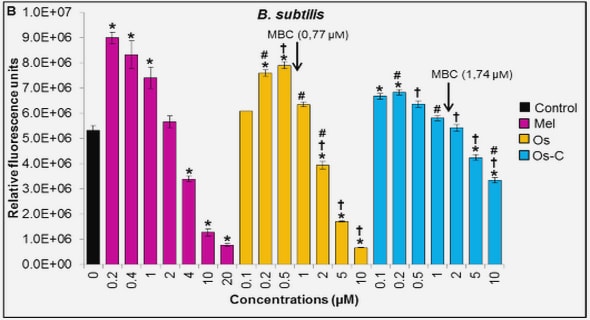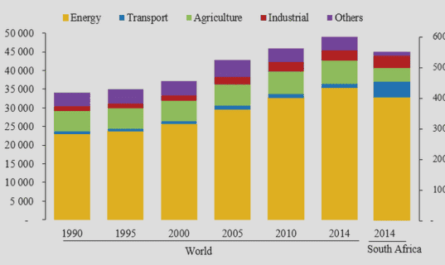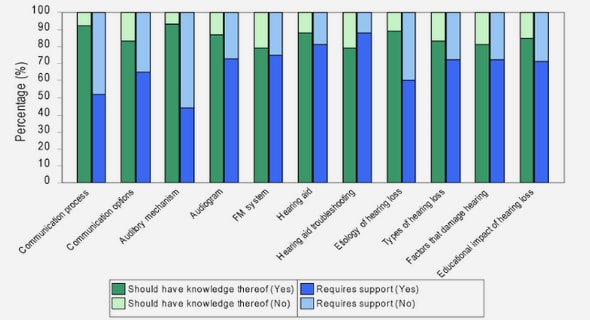Get Complete Project Material File(s) Now! »
DUST AND SURFACE CHEMISTRY
The presence of small solid particles in the ISM was discovered almost si-multaneously to the existence of the ISM itself as an all-pervasive mate-rial medium (and not only localized concentrations of matter around stars). While interstellar matter was long known in localized concentrations such as reflexion nebulae, one of the first evidences of its presence everywhere between stars came from the observation of an extinction of starlight propor-tional to the star’s distance, suggesting a roughly homogeneous (at least in a statistical sense) intervening material medium. In a series of articles, Trum-pler [1930a,b,c] demonstrated the presence of such an extinction (by com-paring the apparent diameter of globular clusters to their luminosity), but also established the existence of a reddening effect through selective absorp-tion (stronger absorption for shorter wavelength, by comparing the actual color index of stars to what should be expected from their spectral type), and finally measured this wavelength-dependence of the extinction, giving the first measurement of the interstellar extinction curve (in the visible) by the pair method (comparing two stars of similar spectral types but different distances). He concluded that small solid particles must be the cause, and suggested that micron-sized particles might be compatible with the observa-tions.
Since then, many more observational evidences have been gathered, while a variety of possible dust materials have been studied in the laboratory. As a result, possible models of the dust population in the ISM have been proposed, reproducing with some success most of the observables while relying in large part on experimental data for the optical properties of the different materials. However, problems remain: some discrepancies with the observations are still present, the optical properties often have to be tweaked and sometimes empirically taken from astronomical observations, and the observational con-straints are such that several different models can perform equally well. In this chapter, we first review the observational constraints and the current dust models. We then describe the role of dust grains in the physico-chemistry of the ISM, before giving a short discussion of the formation and evolution of dust in the ISM.
Observational evidences
Most of the observational constraints at our disposal come from the interac-tion of dust with starlight, either directly by absorbing, scattering or polarizing it, or indirectly by absorbing starlight photons before radiating the energy away thermally or as a photoluminescence process.
When trying to infer the composition of dust, we must make sure that it is compatible with what we know of the relative abundances of the elements, and with the fraction of those abundances that are already accounted for by the gas phase. This gives us a second family of constraints.
Extinction of light
Dust grains absorb light or scatter it away from its initial travel direction. Both result in a progressive attenuation of the light traveling along a given direction, and the combined effect is called extinction. For large solid bod-ies (large compared to the wavelength under consideration), this extinction is independent of the wavelength and results directly from the geometrical cross-section of the body. For small particles (much smaller than the wave-length), we are in the Rayleigh regime with an extinction µ 1/l (dominated by absorption). For sizes comparable with the wavelength, the precise shape depends on the material but an overall decrease with wavelength remains.
In addition to the continuum extinction, localized (in wavelength) absorp-tion bands (or features) can also be caused by electronic transitions (for in-stance the 2175 Å absorption bump thought to be caused by p ! p elec-tronic transitions in hexagonal carbon rings), or vibrational excitation of spe-cific bonds (e.g., the 9.7 mm feature probably due to the Si O stretching mode in silicates). Those features and their precise shape yield important informations on the material dust grains are made of.
The extinction A(l) at some wavelength l is defined as the difference in the apparent magnitude of a star caused by the intervening medium. The difference between the apparent magnitude m and the absolute magnitude M (the brightness of the object if placed at 10 parsecs from the observer) is thus the combination of the geometrical dilution due to distance and the extinction: m M = 5 log10(d) 5 + A (1) with d in parsecs.
The extinction is often given for a photometric band such as the V band (centered at 551 nm with bandwidth of 88 nm), and is then written as AV . One usually measures the reddening effect using the selective absorption E(B V) = AB AV . One can similarly define E(l V) = A(l) A(V). As the pair method (comparing two stars of same spectral types) only yields a non-normalized measure of the extinction curve, the extinction curve is usually given in a normalized way either as E(l V) or as A(l) (the normalization E(B V) AV is often taken at some other reference wavelength instead of the V band). The extinction curves derived from the observations have been studied in great details in a series of papers by Fitzpatrick and Massa [1986, 1988, 1990, 2005, 2007, 2009], from the infrared to the far ultraviolet. First using the pair method in the first three papers (Fitzpatrick and Massa 1986, 1988, 1990), the authors proposed a fitting formula able to reproduce all observed extinction curves. They revisited and extended this study more recently (Fitzpatrick and Massa 2005, 2007, 2009), this time by fitting simultaneously the extinc-tion curve and a stellar model, thus avoiding the pair method and greatly increasing the accuracy of the derived extinction curves. In addition to pro-viding the functional form fitting all observed extinction curves, cataloguing the resulting fit parameters for several hundred of lines of sight, and deter-mining the average galactic extinction curve, they also explore in details the variability and statistics of the extinction curves and study the correlations (or absence thereof) between different properties of the extinction curves. These correlations or decorrelations provide useful constraints on the dust compo-sition (parts of the extinction curve that are not correlated are probably not caused by the same dust component), which are overlooked in most dust models that only try to reproduce the average extinction curve.
The reddening effect is often measured using the ratio of total to selective absorption RV = E(B V). Most parameters of the fits appear to be strongly correlated with RV , so that the extinction curves are sometimes parametrized by RV only (Cardelli et al. 1989), which, in the absence of a complete mea-surement, gives a good approximation of the visible-UV part.
In addition to the 2175 Å UV bump clearly visible on Fig. 6 and 7, the most prominent extinction features are the 9.7 mm and 18 mm silicate features, and the 3.4 mm feature attributed to the C H stretching mode in aliphatic hydro-carbons. Numerous other absorption band in the visible remain a mystery (despite numerous hypothesis, see Krelowski 2002, Snow and Destree 2011) and are called the “diffuse interstellar bands” (DIB).
Scattering
In addition to its contribution to extinction, the scattering of light can be directly measured in some situations, such as reflection nebulae (concentra-tions of interstellar matter in the neighborhood of some stars, that reflect their light), dark clouds, or the diffuse galactic light.
The scattering efficiency is usually parametrized as an overall albedo a giving the fraction of the light reaching the surface that is scattered, and a phase function F(a) giving the efficiency as a function of the scattering angle a. This phase function is usually fitted by the single-parameter Henyey-Greenstein function (Henyey and Greenstein 1941):
FHG(a) = 1 g2
4p(1 + g2
2g cos(a))
where g = hcos ai is a measure of the asymmetry between backward and forward scattering. The scattering properties are thus usually given as the two functions a(l) and g(l). The Henyey-Greenstein function is mostly used for practical reasons and is not a really good fit for realistic grains.
Gordon [2004] gives a review of the most recent observations of scattering from the infrared to the ultraviolet. Draine [2003a] also reviews the physics of scattering along with the observations, and propose an improved fit to the phase function. The compilation of observational data given by Gordon [2004] is shown on Fig. 8.
Dust also scatters light in the X-ray domain with small scattering angles, creating halos around X-ray sources. This phenomenon is discussed in Draine [2003b], where predictions are made from dust models and compared to the observations. The use of small angle X-ray scattering as a constraint for dust models is also reviewed in Dwek et al. [2004].
Polarization
Starlight that has been extinguished by the ISM (as evidenced by its redden-ing) also appears to be linearly polarized at a few percents (Hall 1949). This is usually interpreted as selective extinction by asymmetrical grains (i.e., elon-gated) that are all aligned in the same direction. While the alignment of dust grains seems to be an established observational fact, the mechanisms causing it remain under discussion. The alignment is usually observed to trace the magnetic field, so that the grains are aligned with respect to the magnetic field (but the alignment can be parallel or perpendicular depending on the alignment mechanism and the conditions).
Lazarian [2003] and Roberge [2004] give reviews of the modern theory of grain alignment. Alignment with the magnetic field occurs as a two-stage process: alignment of the rotation axis with the principal axis of the body (fast thanks to internal dissipation mainly by nuclear spin alignment causing magnetic dissipation), and alignment of the rotation axis with the magnetic field. Several processes have been proposed, with rotation being caused by inhomogeneously distributed H2 formation on the surface or by radiative torques (which, even in an isotropic radiation field, can spin up irregularly shaped grains). Radiative torques seem to be the most consistent with obser-vations.
The observations of starlight polarization by dust are reviewed in Whittet [2004]. The comparison with the extinction curve shows that some absorption features are polarized, while other are not, suggesting that only some compo-nents of the dust population are aligned. For instance, the 2175 Å absorption bump is not polarized (see Fig. 9) and the grains carrying the aromatic carbon component are thus most likely not subject to alignment, while the silicate features (10 and 19 mm) seem to be polarized. The 3.4 mm aliphatic carbon fea-ture also seems to be non-polarized. This rules out models in which silicates and carbon are mixed in the same grains. The diffuse interstellar bands are also non-polarized. Moreover, the fact that the UV extinction rise is not polarized indicates that only big grains polarize starlight, either because small grains have more symmetrical shapes or because they are less affected by the alignment mechanisms.
Dust emission
Grains are heated by the light they absorb. They also radiate energy away by emitting photons, and this emission carries precious information about the dust population. Big grains ( 100 nm) emit thermally in the far-infrared with a modified black-body law, and their temperature can be directly de-duced from this emission. For very small grains (. 10 nm), the picture is more complex. As small grains have small heat capacities, they are sensitive to the energy of the individual UV photons, which cause spikes in the grain temperature. Small grains thus have constantly fluctuating temperatures, and their emission is dominated by the transient high-temperature phases, result-ing in near-infrared emission. This effect is discussed and modeled in details in Chap. 5 and 6. This emission in the near- and mid-infrared is mainly constituted of emission bands. The smallest grains are thought to be large molecules of the PAH family (see Tielens 2008 for a review), and the emission bands correspond to C C stretching (6.2 mm and 7.7 mm), C H stretching (3.3 mm) and bending (8.6 and 11.3 mm) modes in these molecules. A typi-cal dust emission spectrum for the diffuse intergalactic medium is shown on Fig. 10.
The mechanism of stochastic heating of very small grains and PAHs that gives rise to the near- and mid-infrared spectrum is discussed and modeled in detail in Draine and Li [2001]. Li [2004] also gives a discussion of the transient excitation and re-emission of large molecules such as PAHs following the absorption of an UV photon.
Dust is also observed to emit in the microwave domain (see Lazarian and Finkbeiner [2003] for a review), in excess to the predictions from thermal (vibrational) emission. This could be due to rotational emission from very small asymmetrical grains, or to magnetic dipole emission from magnetic grains. Recent works favor the hypothesis of rotating very small grains (e.g. Ysard et al. 2010).
Elemental depletions and abundance constraints
Dust models trying to fit the observational constraints discussed above will make hypotheses about the composition of dust grains. As a result, they require some amounts of the heavy elements (C, Si, Mg, Fe, etc.) to be locked up in the dust grains. For a model to be realistic, these amounts must be available in the ISM.
Table of contents :
Introduction
Foreword
1 the interstellar medium
1.1 The life cycle of galactic matter
1.2 Constituents and organization
1.2.1 Constituents
1.2.2 The phases of the ISM
1.2.3 The ISM structure
1.3 Molecules in the ISM
1.3.1 Molecular richness
1.3.2 Observational diagnostics
2 dust and surface chemistry
2.1 Observational evidences
2.1.1 Extinction of light
2.1.2 Scattering
2.1.3 Polarization
2.1.4 Dust emission
2.1.5 Elemental depletions and abundance constraints
2.2 Dust models
2.2.1 The Mathis, Rumpl, and Nordsieck 1977 (MRN) model
2.2.2 The Draine model
2.2.3 The Zubko et al. 2004 models
2.2.4 The Compiègne et al. 2011 model
2.2.5 The Jones et al. 2013 model
2.3 Physical processes
2.3.1 Energy balance
2.3.2 Charge balance
2.4 Surface chemistry
2.4.1 H2 formation
2.4.2 Other reactions and ice formation
2.5 Formation and evolution
2.5.1 Formation processes
2.5.2 Processing and destruction
3 turbulence
3.1 Turbulence
3.1.1 Definition
3.1.2 Kolmogorov theory and scalings
3.1.3 Intermittency
3.1.4 Compressible turbulence and MHD turbulence
3.2 Interstellar turbulence
3.2.1 Observational evidences
3.2.2 Energy sources
3.2.3 Roles
3.3 Turbulent chemistry
3.3.1 CH+, SH+ and H2 in the diffuse ISM
3.3.2 Modeling the interstellar turbulent chemistry
4 stochastic processes
4.1 General definitions
4.1.1 Stochastic processes
4.1.2 The several meanings of “continuous”
4.1.3 Markov processes
4.2 The Chapman-Kolmogorov equation and its differential forms
4.2.1 The Chapman-Kolmogorov equation
4.2.2 General differential form of the Chapman-Kolmogorov equation
4.2.3 The Liouville equation
4.2.4 The Fokker-Planck equation
4.2.5 The Master equation
4.2.6 Important examples
4.3 Stochastic differential equations
4.3.1 Langevin equations and definition problems
4.3.2 It ¯o integral and It ¯o stochastic differential equations
4.3.3 It ¯ o’s lemma for variable changes
4.3.4 Stochastic differential equations and their corresponding Fokker-Planck equations
Dust : temperature fluctuations and surface chemistry
5 a simple dust model
5.1 Dust-radiation interactions
5.1.1 Heat capacity
5.1.2 Radiative processes for a spherical dust grain
5.1.3 External radiation field
5.1.4 Equilibrium temperature
5.1.5 PAHs
5.2 H2 formation on dust grains
5.2.1 Binding sites
5.2.2 Surface processes
5.2.3 Langmuir-Hinshelwood mechanism
5.2.4 Eley-Rideal mechanism
5.3 Dust components and size distribution
5.3.1 A simplistic model
5.3.2 The dust model of the Meudon PDR Code
5.3.3 Comparison with more complete dust models
6 dust temperature fluctuations and dust emissivity
6.1 A Master Equation approach
6.1.1 Master Equation
6.1.2 Properties of the eigenvalues
6.1.3 Resolution method
6.2 Numerical resolution
6.2.1 Discretization of the problem
6.2.2 Numerical tests
6.2.3 Results
6.3 Limit cases
6.3.1 Kramers-Moyal expansion in the big grain limit
6.3.2 Continuous cooling approximation
6.4 Dust emissivity
6.4.1 Computation of the dust emissivity
6.4.2 Comparison with DustEM
6.5 A fast treatment of dust emissivity
6.5.1 Single photon approximation for small grains
6.5.2 A complete emissivity approximation
6.5.3 Implementation in the Meudon PDR Code
7 chemistry on fluctuating dust grains: the case of h2
7.1 A Master Equation approach
7.1.1 General Master Equation
7.1.2 Langmuir-Hinshelwood: general resolution method
7.1.3 Eley-Rideal: a simplified equation
7.2 Numerical resolution
7.2.1 Langmuir-Hinshelwood
7.2.2 Eley-Rideal
7.2.3 Numerical tests
7.3 Approximations of the formation rate
7.3.1 Langmuir-Hinshelwood
7.3.2 Eley-Rideal
7.3.3 Accuracy assessment
8 results : bron et al. 2014
8.1 The article
8.2 Conclusions and perspectives
Turbulence-driven chemistry in the diffuse ism
9 a stochastic model for turbulent chemistry
9.1 Moment approaches and turbulent chemistry
9.1.1 The moment approaches
9.1.2 Strengths and limitations
9.2 A PDF method for turbulence-driven chemistry
9.2.1 The one-point PDF transport equation
9.2.2 Closed and unclosed terms
9.2.3 A stochastic Lagrangian model of turbulent dissipation
9.3 Application to homogeneous turbulence in the interstellar medium
9.3.1 Marginal PDF in the chemical composition-dissipation,space only
9.3.2 Simplification for homogeneous turbulence
9.4 A Lagrangian Monte Carlo method
10 application to the excitation of h2 in the interstellar medium
10.1 Simulation and test of the stochastic diffusion process
10.1.1 Physics and algorithm
10.1.2 Numerical test
10.2 Diffuse atomic ISM: temperature distribution
10.2.1 The model
10.2.2 Net cooling function
10.2.3 Gas heat capacity
10.2.4 Results
10.3 Diffuse molecular gas: H2 excitation
10.3.1 The model
10.3.2 Results
10.4 Conclusions and perspectives
Simulations of the ngc7023 north-west pdr
11 models of the ngc7023 north-west pdr
11.1 The object
11.1.1 Characteristics
11.1.2 Previous works
11.1.3 Constraining the model from the literature
11.2 The observations
11.3 The models
11.3.1 Constant density vs. constant pressures
11.3.2 Best model
11.3.3 Additional aspects
Conclusions and perspectives
Appendix
Bibliography


